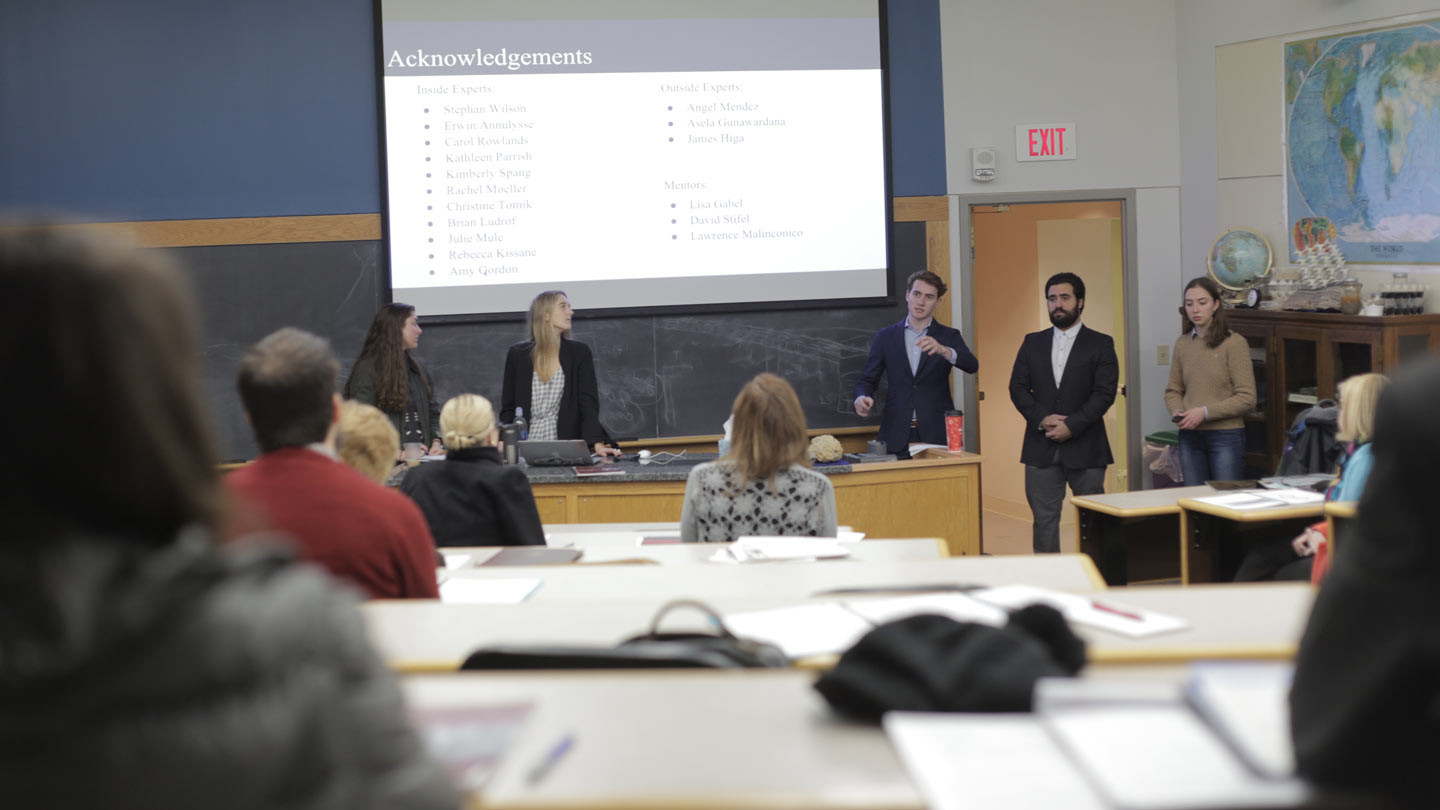Tech Clinic students offer recommendations on improving College communications
Story and photos by Stephen Wilson
A message from the College is received by a 17-year-old via social media. A variation of that message is being sent in print to a 70-year-old alumna while faculty and current students see a similar message via email.
Crafting such a message for style and length for a specific audience for a specific distribution channel is no easy feat. Students in Technology Clinic learned that as they worked with Lafayette’s communications, alumni relations, development, and admissions teams to determine what readers want, how best to deliver it, and how to improve what’s in place.
In its 31st year, Tech Clinic is a two-semester course in which an interdisciplinary team of students work together on imaginative solutions to real-world problems for clients.
Led by mentors Lisa Gabel, associate professor of psychology and neuroscience, and David Stifel, professor of economics, students identified three key audiences: prospective students, full-time Lafayette students, and alumni.
But tapping into what they think is a task that takes time.
In the basement of Pardee Hall during lunch hour in the fall semester, students gather around the table to eat and plan.
 Hazal Soyucengil ’19, Slim Ghodhbane ’21, Isabel Doonan ’20, David Nevins ’20, and Guen Geiersbach ’21 have spent many hours around this same table.
Hazal Soyucengil ’19, Slim Ghodhbane ’21, Isabel Doonan ’20, David Nevins ’20, and Guen Geiersbach ’21 have spent many hours around this same table.
To date, they have developed surveys to current students and found ways to incent them to complete the surveys via the resident assistant network. They have sat in golf carts at Reunion and talked to alum. They have pored over data from nearly 900 respondents to an online survey.
Today they are figuring out how to engage first-year students in hopes they recall material they received during the admissions process.
It is there they realize the complexity of the task—tracking print collateral, digital content, electronic messages, and personal visits (tours and info sessions). They then recall the amount of material that filled their inboxes and mailboxes from various colleges and universities.
Still, they manage to find a way.
“This is one of the important aspects of Tech Clinic,” says Lawrence Malinconico, Tech Clinic director and associate professor of geology. “The students selected for it must have an attitude that combines curiosity and perseverance as they work across their disciplinary thinking to solve various problems.”
Fast forward to their final presentation as they stand in business attire and get ready to deliver messages to a room of vice presidents. Telling leaders how they can do their work better would make anyone nervous.
The team seems cool. Maybe because its findings were mixed.
“The consumers are generally satisfied with the content they receive,” reports Ghodhbane. “The main challenge on campus exists in content delivery.”
“There are many mechanisms to deliver messages, and messages go out often and repeatedly,” says Doonan. “But it doesn’t mean those messages are read or that the importance of the message isn’t diminished by frequent communication, and the sender’s value can be compromised for future messages.”
The team calls this the noise—“a combination of all different frequencies of sound together at once.”
“With all the noise, students can miss the signal,” says Doonan.
The team then recommends ideas for each audience and universal ideas for all communications—like policies, platforms to consider, and ways to facilitate user preferences.
“They outlined the issues well,” says Mark Eyerly, vice president for communications. “And the recommendations are ones we can see helping our team and the broader College as well.”
Despite the noise, the results for this project came through loud and clear.
 Hazal Soyucengil ’19, Slim Ghodhbane ’21, Isabel Doonan ’20, David Nevins ’20,
Hazal Soyucengil ’19, Slim Ghodhbane ’21, Isabel Doonan ’20, David Nevins ’20,